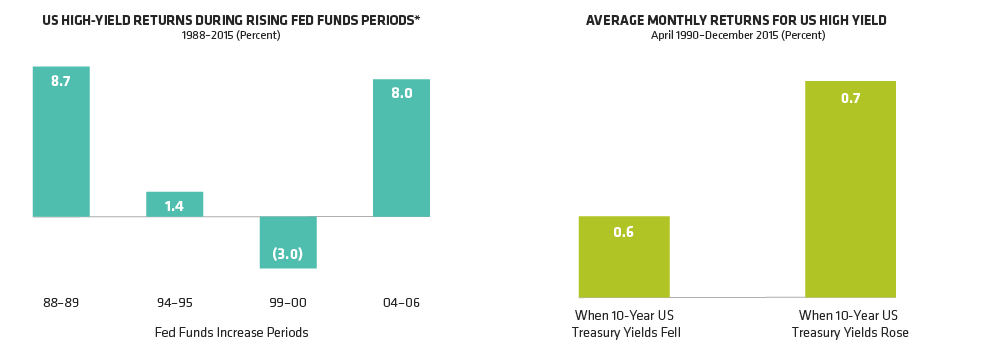Shorter Duration, Higher Cash Flow
So how can investors maximize growth in a rising-rate environment? By seeking out bonds that generate a high amount of income. The more cash flow your portfolio can deliver, the more you’ll benefit.
In our view, a short-duration high-yield strategy can offer a particularly good opportunity to take advantage of rising rates; the quicker the bonds mature, the faster investors can put the proceeds to work in higher-yielding securities.
Credit Quality Still Matters
There are exceptions, of course, and that’s why investors shouldn’t myopically chase the highest-yielding bonds on offer. High-yield securities are more vulnerable to default than are investment-grade ones. And having grown used to low borrowing costs, some high-yield companies may struggle to raise capital as those costs rise, putting their ability to pay back creditors at risk.
That’s why investors should do their credit homework carefully. Many CCC-rated bonds issued by companies with fragile finances could be vulnerable in a rising-rate environment.
It’s also important to remember that talk of rising rates has made short-duration high-yield strategies popular. That’s another reason why credit quality matters. In our view, investors should be prepared to carry out careful credit analysis on each and every bond before buying.
Investors may also want to look into floating-rate securities, which can benefit in a rising-rate environment. But again, selectivity is important. Bank loans boast floating rates, but most are callable at par, with no penalty for the issuer. That means investors probably won’t always reap the benefits of the floating-rate structure. Credit risk–transfer securities from Freddie Mac and Fannie Mae may be another option.
Don’t Sell Your Bonds—It’ll Cost You
The biggest mistake investors can make, though, is to try to time the next interest-rate rise or to sell their bonds just as yields start to move higher. Doing so will only lock in losses. And staying out of the market is an expensive proposition. The Fed has repeatedly said it intends to raise rates gradually. Translation: the yield on cash will be only slightly above 0% for some time to come.
When yields are too low, bonds don’t pull their weight in an investment portfolio. When yields hit zero or go negative, as they have in Japan and many European markets, bonds don’t really work at all. That’s why rising rates are a good news.
Will there be more volatile trading ahead? Probably. But investors with a multiyear investment horizon are likely to benefit as rates rise. They can afford to overlook short-term volatility.

